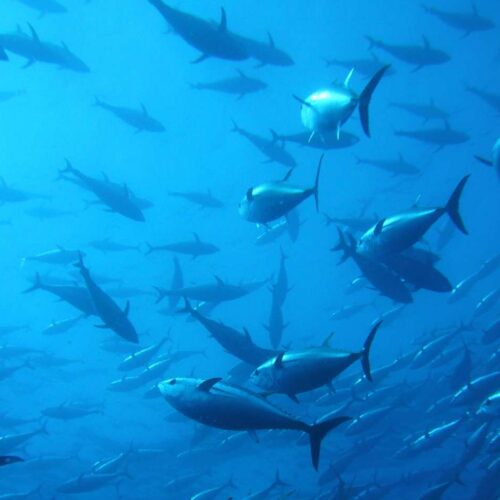Introduction
The U.S. will continue to play a role in satiating a ravenous global appetite for bluefin tuna. The National Oceanic and Atmospheric Administration announced today that “based on careful scientific review” it will not list Atlantic Bluefin tuna under the Endangered Species Act, a decision both lauded and admonished by those in the hot-topic arena.
A listing would have banned all U.S. fishing and trade of the globally popular sushi delicacy. Instead, the administration has placed the fish on a watch list as a species of concern. NOAA says it will revisit its decision in 2013 when more scientific information is available.
The Gulf of Mexico, where the Deepwater Horizon oil spill took place last spring, is the only known spawning ground for Western Atlantic Bluefin tuna. The spill’s potential damage on the bluefin population prompted a petition from the Arizona-based Center for Biological Diversity to protect the species under the Endangered Species Act.
Larval surveys from 2010 show that the bluefin population is on target with historical averages, said Clay Porch, director of the Sustainable Fisheries Division at the NOAA Fisheries Southeast Fisheries Science Center. However the samples on which this conclusion is based were taken before the oil spill happened.
By waiting two years for a follow-up assessment, when the agency believes it will have more conclusive information on the spill’s effects, NOAA is “just watching the bluefin tuna go extinct,” said Catherine Kilduff, a staff attorney at the Center for Biological Diversity.
While conservationists lament, fishermen and industry groups are celebrating the avoided loss of an industry they say generates tens of millions of dollars and touches tens of thousands of fishermen.
The American Bluefin Tuna Association, an industry group, called NOAA’s decision “wise.” ABTA boasted in a press release about its role in the assessment saying they had contributed “hundreds of man hours and funds to help NOAA make the correct decision here.” That quote did not appear in a revised version of the release.
U.S. fishermen are responsible for about 5 percent of total bluefin catches Atlantic-wide. These landings are of Western Atlantic Bluefin tuna, but the majority of the world’s bluefin supply comes from the Mediterranean Sea. That stock, the Eastern Atlantic Bluefin, has experienced a 75 percent decrease over the past half-century, largely due to overfishing by European fleets.
An International Consortium of Investigative Journalists report revealed last year that rogue fishing and illegal trade are rampant in the Mediterranean and have created a $4 billion black market in bluefin.
“The future of this species relies on sound international management,” said Larry Robinson, Ph.D., NOAA assistant secretary for conservation and management.
Officials with the international body in charge of regulating Atlantic tuna fishing, the International Commission for the Conservation of Atlantic Tuna, insisted that management and compliance have improved over the past year. Russell Smith, head delegate of the U.S. to ICCAT, cited individual vessel quotas and third party observers on all large vessels as some of the safeguards that have recently been put in place.
Between 2004 and 2008 the U.S. imported an average of 1.2 million pounds of bluefin each year, according to a NOAA analysis. Imports account for about 80 percent of all the bluefin sold in the U.S.
“We’re economically supporting the overfishing in the eastern Atlantic and the Mediterranean,” Kilduff said.
The rejection of the listing appears to contradict NOAA’s push to ban all international trade of Atlantic bluefin at the Convention on International Trade in Endangered Species last year. But officials said stronger quota restrictions coupled with more reliable management has changed the environment.
Read more in Environment
Environment
Judge rejects Exxon attempt to end lawsuit over refinery pollution
Court gives boost to environmental advocates seeking accountability by Court boosts environmental advocates seeking accountability by regulators
Environment
EPA agrees to reveal secret identities of potentially risky chemicals
While government opens a window, industry fears disclosure to competitors


Join the conversation
Show Comments